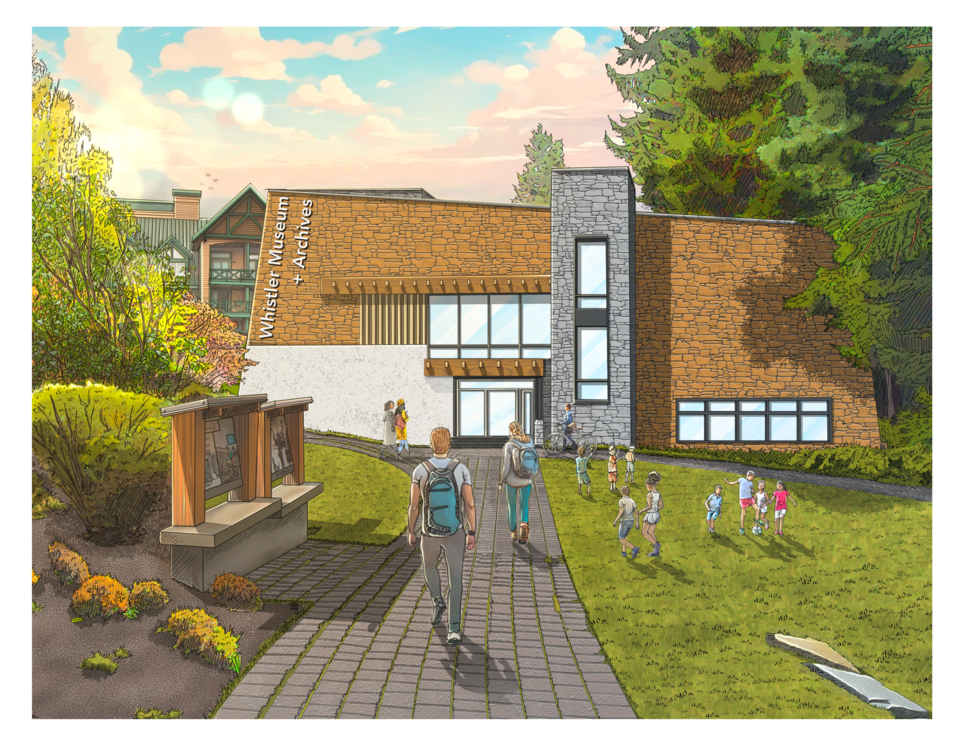In such a young, transient tourism community, capturing and preserving Whistler’s distinct history is already a tall order for the team at the Whistler Museum, which, since opening its doors in 2009, has been housed in a temporary trailer that has outlived its usefulness.
Now, in order to continue sharing the community’s stories generations into the future, the Whistler Museum and Archives Society (WMAS) is embarking on its most ambitious project to date: raising the necessary funds for its planned $10-million, state-of-the-art facility—and it wants your help.
The society anticipates the federal government will be a major funder of the new museum, contributing up to $5 million of the project’s capital cost through its Canada Cultural Spaces Fund. However, to boost its chances at securing funds, the WMAS must raise 30 per cent of the capital costs—$3 million—before submitting an application to Ottawa.
“By 2028, we’re looking to start construction, so I think probably in the next year and a half, we want to raise that capital so we can get to the point to start applying for these larger infrastructure grants,” explained Brad Nichols, the museum’s executive director.
The society is targeting mid-2028 for the new museum’s opening.
The current facility, Whistler’s former, 1970s-era Canada Post office located behind the library, has grown cramped over the years, impacting the museum’s ability to house its collection, store archives, and welcome the more than 15,000 visitors that come through its doors annually.
Campaign donations will help fund “important assets” at the new facility, including expanded permanent and temporary gallery spaces, reception areas, meeting rooms, and the museum structure itself, “all designed to the highest standards of sustainability and accessibility,” the WMAS said in a release.
“One of the major things is making sure we have that accessibility so more people can go through the museum’s archival records,” Nichols said. “We also need space where people can come in to do research. It’s not just the museum space, where we can host permanent and temporary exhibits for guests learning about Whistler and being able to better showcase those kinds of stories. We are limited in the space we have now, and writing our [Whistorical] blog articles, we can transcend that space, but by having a larger space, we can tell those stories in a better, more meaningful way.”
A larger, more modern space will also allow the museum to expand the breadth of temporary exhibits it offers guests.
“It will allow us to tell stories of other areas if it’s related to the mountains, to ski culture or biking, or even exhibits from other regional museums with stories we want to tell here,” Nichols said.
Alongside its fundraising campaign, the WMAS has set out a new mission statement for the museum: “Collect, preserve, document and share the natural history and human stories of mountain life—focusing on Whistler—and provide a forum for inspiring ‘possibilities.’”
“Having an adequate space to maintain these items for not just 15 years, but 150 years down the road will enable us to better understand the people that live here now, that lived here in the past, and the people who will live here in the future,” added Nichols.
For more information, visit whistlermuseum.org/newmuseum. To donate, visit tinyurl.com/2p8cta6n.




